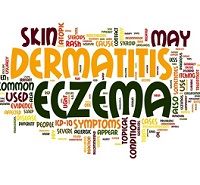Article
Which Emollient Makes Atopic Dermatitis Worse?
Author(s):
Multiple measurements of skin integrity and function were applied to distinguish between the effects of topical emollient products in a recent study. Two popular products in the UK were determined to transiently improve the skin barrier that is thought to be defective in atopic dermatitis (AD), and another product was confirmed to be damaging.

Multiple measurements of skin integrity and function were applied to distinguish between the effects of topical emollient products in a recent study. Two popular products in the UK were determined to transiently improve the skin barrier that is thought to be defective in atopic dermatitis (AD), and another product was confirmed to be damaging.
"It is...important to recognize that not all emollients are the same," advised Simon Danby, PhD, Academic Unit of Dermatology Research, University of Sheffield Medical School, Sheffield, UK, and colleagues. "Just because one emollient reduces the severity of AD does not mean that all emollients will exhibit such a 'class' effect."
The observer-blinded assessment of emollient product effects is published in the November issue of the British Journal of Dermatology. A Functional Mechanistic Study of the Effect of Emollients on the Structure and Function of the Skin Barrier
The researchers cite evidence that skin barrier defects are an underlying condition in the development of AD. While the soothing and hydrating features of emollients are commonly used to reduce severity of established AD, they note increasing interest in their potential as skin barrier enhancing agents.
Danby and colleagues employed a battery of measures to gauge emollient product effects, including transepidermal water loss (TEWL) — a key indicator of permeability barrier function--stratum corneum (SC) integrity and hydration, skin surface pH, and redness.
SLS
The study cohort consisted of two groups of adults 18 years of age or older with quiescent AD, and one healthy control group. Two popular emollient products in the UK, Diprobase cream (Schering-Plough) and Doublebase gel (Dermal), were applied to separate sites on all subjects twice daily for 28 days. The healthy controls also received aqueous cream BP (standardized formulation of the British Pharmacopeia) which contains a commonly used anionic surfactant, sodium lauryl sulphate (), which has been associated with skin irritation and barrier damage.
The researchers reported that both brand products reduced TEWL transiently by occluding the skin, creating an artificial barrier that declined after 6 hours. There was no sustained reduction in TEWL, however, at study end point. The use of the Doublebase gel, but not Diprobase cream also produced a sustained increase in SC hydration. The aqueous cream BP, in contrast, was associated with an elevated TEWL, and SC thinning consistent with an increased rate of desquamation.
"The finding that topical treatment with aqueous cream BP adversely affects the skin barrier, and in doing so could potentially prolong or exacerbate AD, highlighted the need to determine the safety and appropriateness of other emollients as treatments for AD," Danby and colleagues indicate.
Related Coverage:



